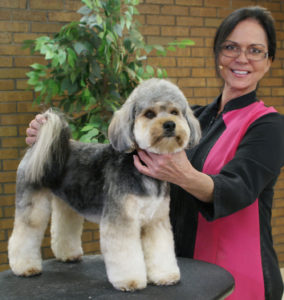
#10 – How to Create a Stylish Salon Trim on a Mixed Breed
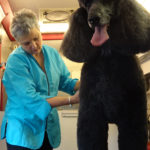

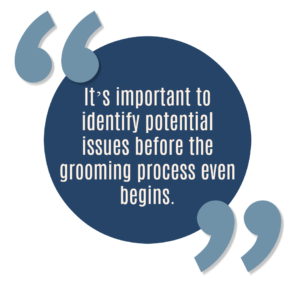
How do you proactively handle these situations and prevent having upset customers?
Three ways.
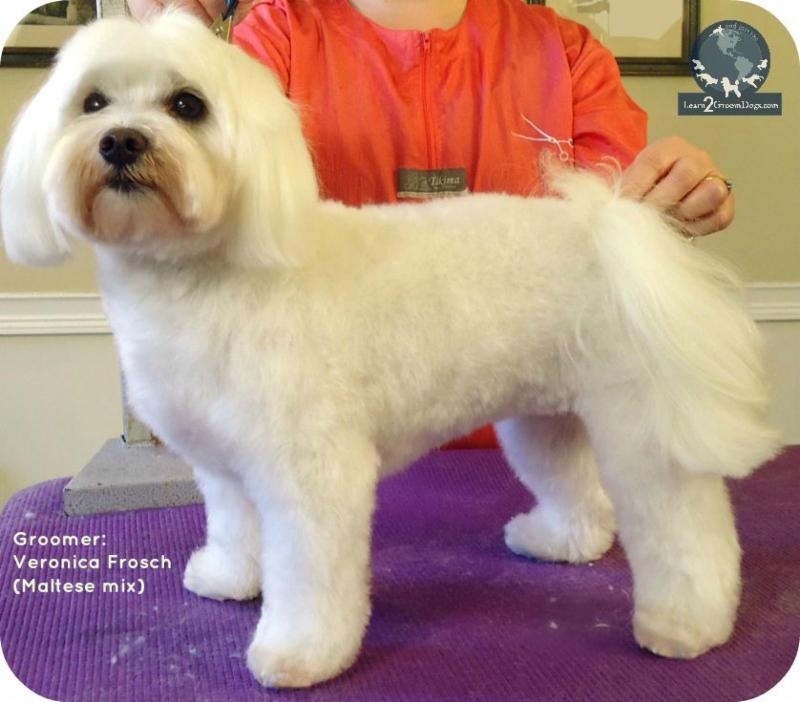 “Give my dog a puppy cut.”
“Give my dog a puppy cut.”
Ask 10 customers or groomers to describe this style and I bet you get 10 different answers. One one hand, it’s a great conversation starter! On the other, it’s a quick way to discover how easy it is to misunderstand one another.
The puppy cut is popular because it works well on a wide variety of pets. Almost any breed that grows longer coat can be done in this easy-to-care for style. Yet, the puppy cut is also the most misunderstood haircut in grooming salons around the country. Why? There are no clear directions of what this trim actually is or how it should be done. It’s left up to individual personal interpretation by owners, groomers, or talented pet stylists.
The puppy cut started as a trim style for young Poodles in the dog show world. Once the puppy is a year old, it is put into the elaborate adult haircut for the conformation ring. Today, the term “puppy cut” is used very loosely. It can apply to a wide variety of different breeds. It’s highly adaptable to any size of dog or coat type.
Many owners love this style of trim – and with good reason. It’s cute, easy to care for, and easy for customers to remember by name. In this trim, the dog does not drag in dirt and debris from outdoors. Their ears don’t drag in the food or water dish. The need for brushing between grooming appointments is minimized. On smaller pets, bathing between grooming appointments is a breeze. What’s not to love? Read the rest of this entry »
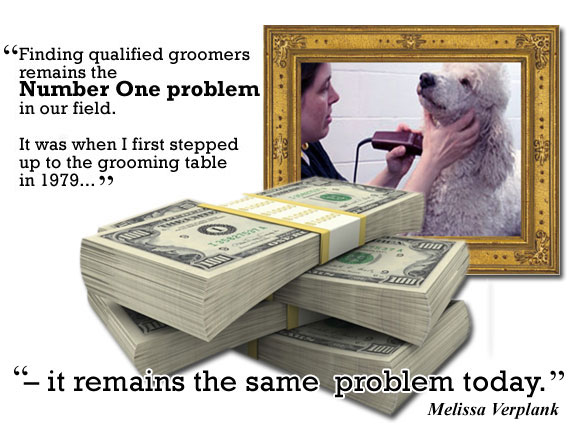
In my experience, the hardest part of running a business is STAFF!
Hands down the most challenging part of running a business is staffing it. Managing staff. Keeping staff. Paying staff. Keeping them accountable. Keeping them productive. Keeping them happy.
And the real biggie – training them.
So let’s tackle the training challenge first. It’s far easier to hire basic labor than filling a position that requires skill. At our kennel, the Whiskers Resort and Pet Spa, we have an endless supply of dog enthusiasts that want to work in the kennel. With multiple colleges within our community, the labor force is easy to come by. After all, everybody wants to play with puppies! Read the rest of this entry »
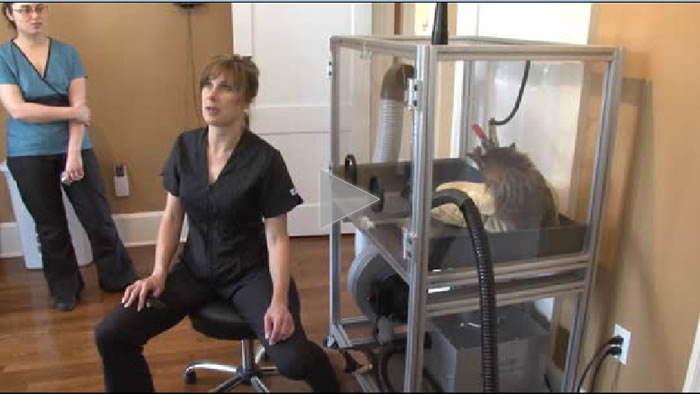 Attending a hands-on clinic is still one of the best ways to learn. These events often feature stylists that have proven their skill level around the globe. Despite their busy workshop travel schedules, celebrity pet stylists can still be found at their grooming tables every day, just like you, grooming regular clients.
Attending a hands-on clinic is still one of the best ways to learn. These events often feature stylists that have proven their skill level around the globe. Despite their busy workshop travel schedules, celebrity pet stylists can still be found at their grooming tables every day, just like you, grooming regular clients.
Have you ever had the opportunity to train with a celebrity pet stylist? It’s a great way to improve your skills and get super energized!
Many top professional pet stylists love to help the next generation of groomers. Some of these teaching opportunities may be demonstrations or lectures. Others might be workshops where you supply the dog or cat (as well as the grooming tools) and have the opportunity to be personally coached as you work.
So, how do you get the most out of one of these coaching sessions? Read the rest of this entry »
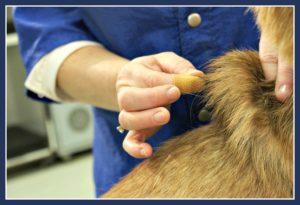 I was at GroomExpo just a few weeks ago and met many wonderful pet professionals. One of them was Connie Carter of Gorgeous Growlers Grooming in Florida. She had attended several of my lectures and at the end of the show she stopped to thank me as we passed in the hall. We chatted a bit and as we parted ways, I reminded her that I was happy to help with any questions that she wanted to email to me. I love complex questions that can lead to blog topic ideas! Well, guess what? Connie didn’t waste any time. Within a week, I got my first question from her – and it’s a good one.
I was at GroomExpo just a few weeks ago and met many wonderful pet professionals. One of them was Connie Carter of Gorgeous Growlers Grooming in Florida. She had attended several of my lectures and at the end of the show she stopped to thank me as we passed in the hall. We chatted a bit and as we parted ways, I reminded her that I was happy to help with any questions that she wanted to email to me. I love complex questions that can lead to blog topic ideas! Well, guess what? Connie didn’t waste any time. Within a week, I got my first question from her – and it’s a good one.
“Can I learn how to hand-strip online? How long does it take to learn how? I have a new client whose Westie puppy is being delivered at the end of October. I do have some experience helping but I’ve never done a full hand stripping job of my own.”
The short answer to your question is: “Yes.” You can teach yourself to hand-strip if you have the right information. The trick is getting the right information at the right time – AND you need to have the right dog with the right coat to practice on!
 Luckily, hand-stripping is pretty forgiving. Granted, some breeds are easier to learn on than others.
Luckily, hand-stripping is pretty forgiving. Granted, some breeds are easier to learn on than others.
There are two types of coats that need routine stripping to maintain the correct texture and color:
1. Sporting Dogs (also known as Gun Dogs)
2. Harsh-coated pets (primarily in the Terrier and Working groups)
I still remember the coat of my first hand-stripped show West Highland White Terrier. It felt like a suit of armor. The dogs’ jacket was so hard, nothing was going to penetrate that coat. At that point in my career, I had only clipped Westies. They were smooth, soft, and cuddly. I had no idea what hand-stripping was – let alone that hand-stripping was the correct way to prepare the coat.
I rank the difficulty of hand-stripping on a scale from 1 to 3. The coat is factored in, as well as the temperament of the pet.
(Because Connie based her question on a West Highland White Terrier, I will focus more on the harsh-coated coat types. I would say Westies fall between a 2 and a 3 on the following difficulty scale.)
RATING SCALE
ONE
Super simple. The hair pulls out with very little effort.
TWO
Requires a bit more thought and effort. The hair needs to be worked a little bit more. You will need a wider variety of stripping tools to get the job done. You also need to think about the new layer of coat coming in. This fresh layer of harsh coat will need to be constantly rotated. The rotation normally takes place at consistent intervals so the dog is never stripped down naked.
THREE
In a word – challenging. Different parts of the coat on the dog’s body grow at different rates. Hand stripping them in the right sequence is critical for correct coat regrowth. Some sections are easy to pull down, while others are very difficult. Getting the dog to look conformation show ready is an art. It requires education, knowledge, training, skill, and practice. Lots and lots of practice.
Many accomplished stylists do a combination of half stripping, half clipping on their pet clients. This technique mimics the look and texture of a properly pulled coat. It’s typically much quicker to do. It’s easier on the pet – and kinder to the client’s pocketbook. It will also leave a bit a coat on the dog, making it more attractive to a pet owner.
When you are first starting to learn the technique of hand-stripping, it is advantageous to start with what I would consider a #1 rated dog. Start with something very easy. Preferably, the coat is blown and literally falling out. This type of coat requires very few tools to pull it out – maybe just your fingers. Which breeds with these be? Here are a few:
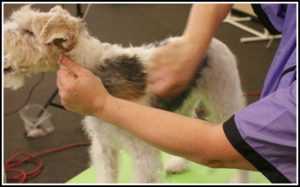 As you increase your skill level, you’ll be ready to tackle more challenging coats. I would consider these dogs a #2 in their level of difficulty. Keep in mind many dogs could waver between levels.
As you increase your skill level, you’ll be ready to tackle more challenging coats. I would consider these dogs a #2 in their level of difficulty. Keep in mind many dogs could waver between levels.
Once you have mastered the skills required to hand-strip #1 and #2 rated coat types, then you’re ready to start working on the most challenging group. Remember to keep in mind that this also depends on the dog.
All of the harsh-coated breeds will vary slightly with their degree of difficulty. A number of factors affect where they ultimately fall in this rating system. Genetics need to be considered. Hormones, as well as whether the dog is altered or intact will affect a coat. The length of time between grooming sessions will dictate how readily their coats pull. The climate and the season will also play a role in how easily the coat is removed.
Where do you turn when you want to learn the technique of hand-stripping? You have options – and many of them can be self-directed.
Observation
Start with observing high-quality dogs. Seeing a dog in the flesh is the best way. Go to dog shows. Study the dogs in the grooming area as well as in the ring. Look at magazines featuring top winning dogs. Do an online search for images of AKC or UKC Champions. Go to top breeder websites. Watch dog shows online or on TV.
You need to firmly etch a mental picture of what a high-quality hand-stripped dog should look like. It is also important to actually touch the coat to get an idea of what it feels like. Achieving any type of quality without this knowledge will be impossible.
Breed specific books will give you details. There is one particular booklet I really like. It does an excellent job of explaining the techniques of hand-stripping. It’s older and though it may not be very sophisticated, the material is timeless This book caters to what I would consider the more challenging breeds: broken-coated Terriers that have their coats “staged” for proper regrowth. However, the techniques outlined can be applied to many of the easier breeds as well. Click here to see more details about this book.
Videos
Most professional pet groomers are visual learners. Videos are a great way to go – as long as the content is accurate.
In this day and age, you have to be very careful. Trust me, I just did some quick research to see what was currently available on YouTube concerning hand-stripping. There certainly was a wealth of information but much of it was scary. Sure, there is a few nuggets of excellent content but you have to know what you’re looking for and have enough knowledge to know whether you’re looking at quality techniques or not. You’re better off looking for top stylists that are producing videos on the topic. You can find them both in DVDs as well as online streaming. In the Learn2GroomDogs.com library there is a wide assortment of streaming video lessons. Here’s a hint. If you search the site using the word “strip” in the search bar, you will pull up ALL the hand-stripping lessons. From there, you can isolate what appeals to you.
All of the training partners do a great job. Jennifer Hecker does an excellent job explaining the basics of dealing with a harsh-coated Terrier. Lisa Leady, Suesan Watson, and Amy Triezenberg all focus on beginner and intermediate hand-stripping. Most of their lessons deal with typical pet dogs we see in our grooming salons. Michelle Evans focuses on more advanced techniques, as well as how to apply different stripping techniques. There are many other training partners sprinkled through the hand-stripping section who also have exceptional lessons.
When you are looking for DVDs or videos to watch, make sure you verify the qualifications of the demonstrator. There are many high-quality lessons available but others can be a waste of time.
Clinics and Seminars
One of the best ways to learn hand-stripping techniques is to attend a clinic or seminar. Advanced hand-stripping is definitely an art. It takes plenty of knowledge and practice. Learning from a master is a huge shortcut when it comes to becoming proficient. How do you find out about clinics and seminars? Many certification organizations host workshops. Make sure you are on their mailing lists. Join a couple professional groups on Facebook such as Pro Groomer Network. Your state may have an organized groomers Facebook page. Grooming schools in your area may also host events.
Mentor
Finding a mentor for a particular technique or breed will certainly fast track you to your goals. The mentor may come from the conformation show ring, the competitive pet styling arena, or they may have years of experience grooming pets. As your skills grow, your mentors might grow and change. And if you can’t find a mentor, find a study partner who is looking to expand their skills. Somebody that you can work with you as a team to find the best information. Meet up after hours to work on your skills together with practice pets.
Whatever route you choose, you certainly can teach yourself. Finding help in the form of books, videos, seminars, clinics, or an actual mentor will certainly help. The more you are able to combine those learning resources, the shorter your learning curve.
The art of hand-stripping is becoming more widely accepted in the pet grooming arena. When a new harsh-coated Terrier walks through your door, think twice about clipping the coat off. Is that really the best option? Clipper cutting a harsh-coated Terrier typically destroys the correct texture. Many clients opt for that route simply to reduce cost and time factors associated with hand stripping. For those clients that have educated themselves about their breeds, hand stripping may be their preference – as long as they can find a professional pet stylist that can execute the technique correctly.
Are you that person?
Do you do any hand-stripping? Why or why not? Jump over to the Learn2GroomDogs Facebook page and tell us about it!
Happy trimming!
~ Melissa
 Dog groomers love to do a good job. We like the way it feels to excel and to please other people. For some, this is how they measure success. For others, this is a starting point. Do you want to know the steps and work it takes to go from good to great?
Dog groomers love to do a good job. We like the way it feels to excel and to please other people. For some, this is how they measure success. For others, this is a starting point. Do you want to know the steps and work it takes to go from good to great?
What are your goals? Do you admire today’s top competitive pet stylists? Maybe you have your sights on certification. Do you have a dream of someday becoming a certified master groomer or pet stylist? Maybe you hope to become a member of GroomTeam USA or represent your country in world team competition?
Maybe your dog grooming aspirations have nothing to do with competitive styling. Maybe your goal is winning the trust and respect of pet owners, turning them into regular clients.
They’re all worthy goals – and guess what? It’s not as hard as you think. There is no complicated recipe. But there is a secret.
Focus on the fundamentals.
Success is all about the fundamentals. The fundamentals are the little things. The ordinary things. And often, they are the tedious things. But to be the best you must master them. You must become a master of those ordinary, everyday tasks. With every act of greatness, whether in sports, business, the arts, or in pet grooming, the best of the best achieve extraordinary feats by doing ordinary things with amazing consistency, commitment, and focus.
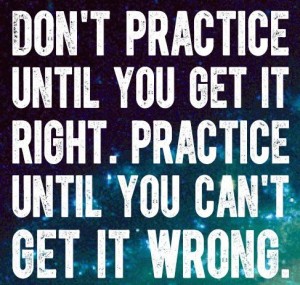 What are the fundamentals in dog grooming?
What are the fundamentals in dog grooming?
It means perfecting the core skills: bathing, drying, brushing, fluffing, and dematting. It’s also clipping, scissoring, as well as understanding basic structure and anatomy. It means having solid and safe handling skills.
As a professional dog groomer and stylist, we get to practice these skills all the time. In fact, many of us practice them every single day. World-class pet stylists don’t master their craft by working every day on perfect dogs with fabulous coats in perfect condition. For many of them, the only time they work on a “perfect dog” is in the ring – and under the pressure of competition. Even then, there is no such thing as a perfect dog. Every dog has its flaws – even the perfect ones.
Top stylists know it takes years of practice with everyday pets to master the fundamentals. Winning doesn’t just happen on the day of the competition. Winning is a result of dedication and hard work. The trophy is a product of training, study, and sacrifice. You cannot earn a high grade in certification testing on testing day, alone. Winning or earning high grades on your practical skills tests starts in every bathtub and on every grooming table, every day. There is no such thing as an overnight success. Typically, it takes years of uncountable numbers of hours of dedication to the craft.
Practice, in itself, is not enough. In order to truly succeed you need to follow this rule: Perfect Practice Makes Perfect. If you are not practicing dog grooming fundamentals correctly, you’re wasting your time. Clients will not return if your work is sub-par. Awards will not be given. High test scores will be out of reach.
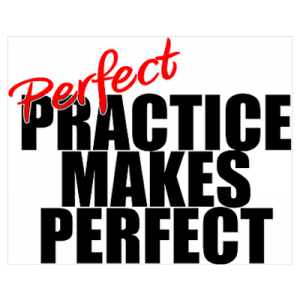 With so many variables with dog grooming, where do you start? What coaching or training technique should you trust? How do you learn the RIGHT skills?
With so many variables with dog grooming, where do you start? What coaching or training technique should you trust? How do you learn the RIGHT skills?
Start at the ground floor and learn from the masters. The information is out there. You will find it in:
Research online. Talk to vendors and manufacturers. Work with a mentor, a coach, a consultant. Look. Listen. Learn. But don’t blindly trust everything you find – check references whenever possible. Today, there is a lot of information out there – unfortunately not all of it is good information! Talk to the experts to make sure the material you are learning is correct and safe.
As you learn, take it one small step at a time. Dissect every step. Break it down. For every technique there are micro steps to learn to perfect any skill. Study those micro steps.
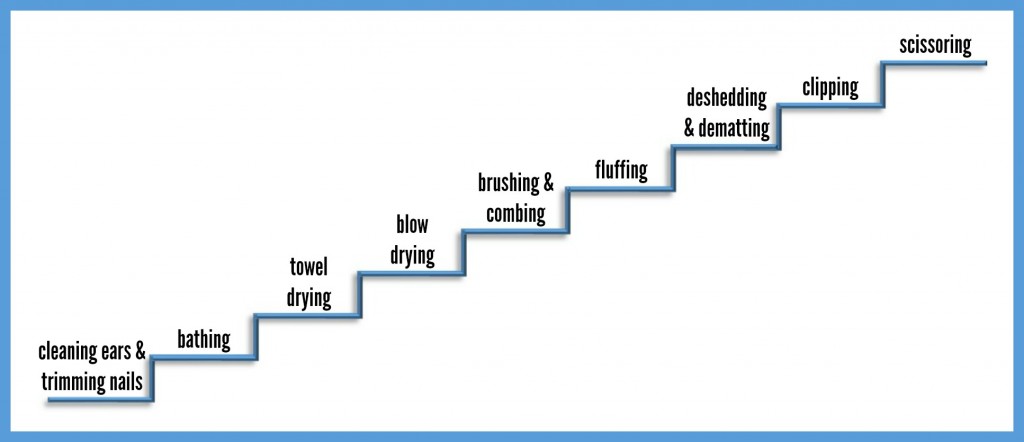 Start at the very beginning just like with a long flight of stairs. You start at the bottom, taking one step at a time. Mastering dog grooming fundamentals is a lot like a staircase. Jumping ahead or skipping steps will not get you ahead any faster. In fact, missing steps is way more detrimental to a career than staying on course dealing with each step moving up the flight of stairs.
Start at the very beginning just like with a long flight of stairs. You start at the bottom, taking one step at a time. Mastering dog grooming fundamentals is a lot like a staircase. Jumping ahead or skipping steps will not get you ahead any faster. In fact, missing steps is way more detrimental to a career than staying on course dealing with each step moving up the flight of stairs.
With every step along the way, you are creating a knowledge base. It will continue to grow with your career. It is paramount for any pet professional to have fabulous pet handling skills to build trust with our furry clients while keeping them safe. Another area that is critical to any successful pet groomer or stylist is learning the finer details of structure and anatomy.
The key is to focus on improving each day, taking the necessary steps. If you incrementally improve each day, each week, each month, each quarter – by the end of the year you will see remarkable results and growth. Over time, by committing to this process, the best develop their skills and enhance their performance as they strive for excellence and achieving perfect execution.
If you want to be at the very top of your game, to become one of the best professional pet groomers/stylists in your town, in your state, in your country, you need to practice perfect fundamentals. Every. Single. Day. You don’t need to have perfect pets to make this happen. Grooming everyday pets offers an abundant opportunity to practice the fundamentals.
Your success doesn’t necessarily mean winning the award or scoring a high grade. Sometimes success means having a full appointment book with happy customers. That’s what truly makes a successful grooming business.
What steps do YOU take? Jump over to the Learn2GroomDogs Facebook page and tell us about it!
Happy trimming!
~ Melissa
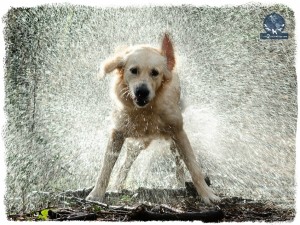 It always shocks me when a competitor or a workshop participant presents me with a DIRTY DOG for evaluation. A dirty dog?! No joke – it happens all the time.
It always shocks me when a competitor or a workshop participant presents me with a DIRTY DOG for evaluation. A dirty dog?! No joke – it happens all the time.
Nails are not trimmed correctly.Coats are not dried properly or completely.
…or worse yet, there are still mats and tangles left in the coat.
It’s not good grooming but I see all the time. Not only in the ring or at hands-on events, but in salons, too.
To me, bathing and drying are the most critical parts of any groom. One bather can make or break your entire grooming department.
Here are 7 skills I look for in an indispensable groomers’ assistant (AKA the bather!) All 7 of these skills must be MASTERED if you want to be highly valued in your grooming salon, if you want to move ahead in your career, or before you can gather loads of glowing clients.
![]() Be able to identify popular breeds
Be able to identify popular breeds
Anybody working professionally with pets needs to be able to identify the top 15 or 20 breeds that regularly come into your salon. It’s the fastest way for groomers to be able to communicate to one another.
![]() Be able to handle pets safely and compassionately
Be able to handle pets safely and compassionately
How many times have you heard others (or maybe even yourself) say, “This dog is driving me nuts!” Impatient treatment of a pet is never acceptable. If you lose control, you can bet that you won’t have clients for long. Being able to understand canine body language is job requirement #1. If you are going to win the pet’s trust and cooperation, you must be able to speak its language. It will keep you and the pet safe. It will also make the entire experience much more enjoyable for all parties.
![]() Understand the many different coat types found on individual pets
Understand the many different coat types found on individual pets
Each coat type has special needs that need to be addressed in the bathing and drying process to get the best results. A Beagle has different bathing and drying needs than a Standard Poodle. The same holds true with a coat on a Golden Retriever or an Airedale Terrier. A talented bather will instantly be able to identify dogs that possess simple coats or dogs that are going to be time-consuming and a challenge.
![]() Bathe the dogs until their coats squeak
Bathe the dogs until their coats squeak
If they don’t squeak, they are not clean.
Period.
This is the foundation of every fabulous grooming job. I cannot stress its importance enough. There are many products on the market to help achieve superior results in only one or two baths. Even if you use the best shampoos on the market, the dog will not get squeaky clean unless they are rinsed thoroughly. Rinse until the water runs clear and you hear the “squeak” when you push the water through the coat. And not just the easy to see or reach parts. Get soap and water to the undercarriage, under the ears, and the special parts. If the whole dog isn’t clean – it’s still dirty. Nothing wastes time or money more than having to re-bathe a dog because you didn’t do the job right the first time. There’s an old saying: if you don’t have time to do it right, when will you have time to do it over? Get it right the first time.
Most of the time, this will mean utilizing a form of active drying. There are several drying methods and combinations to choose from, based on the coat type, trim, and the pets’ tolerance. Incorrect techniques or careless attention to drying will waste more time than almost anything else in the grooming process. In most cases, high velocity and stretch (or fluff) drying techniques will need to be used to get superior results. Oh, and the pet needs to be bone dry too!
![]() Learn efficient and SAFE brushing techniques
Learn efficient and SAFE brushing techniques
Systematic brushing is the only way to effectively work through a coat and get right down to the skin. Selecting the correct tool for the coat type will be important. Knowing how to hold the tool along and how much pressure to exert is also important. Not enough pressure and you will not be efficient. Too much pressure and you’re going to make the pet uncomfortable and could cause injury. The key is to work methodically and gently over the entire dog – right down to the skin until a wide tooth comb can easily be pulled through the fur.
Trimming nails and cleaning ears is just an automatic process when it comes to grooming pets. If it is not done – or not done well – it’s considered sloppy. Clients don’t want to spend their hard-earned money on sloppy work. Stylists executing haircuts should not have to go back and double-check this type of preliminary pre-work. Some salons routinely check and/or express anal glands. Whatever your salon option is, you should follow their guidelines.
Being a bather – or being a groomers’ assistant – can be extremely rewarding. However, it does carry a lot of responsibility. Many of these skills are considered the foundation of all grooming.
Remember: every owner faces a choice when it comes to grooming. They can come to you, do the job themselves, not have the pet groomed all… or go down the road to someone else. Make sure they make the right choice by sticking with you.
What do you look for in a great groomer assistant? Jump over to the Learn2GroomDogs Facebook page and tell us about it!
Happy Trimming!
~ Melissa
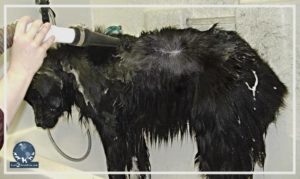 Many of us are seeing a lot of pets that are ready for a great makeover. With that in mind, I thought it was the perfect time to revisit my blog on salvage work.
Many of us are seeing a lot of pets that are ready for a great makeover. With that in mind, I thought it was the perfect time to revisit my blog on salvage work.
As many of you know, I’m a big dog person. Working on these large furry dogs that have a huge shedding problem is one of my favorite things to do in a grooming salon. I know, I know, call me crazy – but I just love seeing the transformation in this type of job. Over the years I’ve gotten really quick with the process and rarely cringe, no matter what the size of the dog, nor the condition – I see it as a fun challenge!
My #1 rule is: Never work on a dirty dog. If water can penetrate the coat, let your products do the job.
Working on a dirty dog is not only unpleasant, but it also takes longer to do. Plus, there will be a lot of coat damage and breakage. A dirty coat is dry and brittle. The dirt and dander trapped within the fur makes it more difficult to brush out. Working on a clean coat will be easier for both you and the pet – and much more pleasant.
If there are large chunks that water cannot penetrate, go ahead and break up the tangle using the tool that is safe for the pet. Don’t worry about removing it completely, just break it apart so the water and shampoo can do its job.
Prepare your bathing area. If the dog is exceptionally dirty, use a shampoo especially designed for dirty dogs. Using a follow-up treatment of a skin and coat conditioner after bathing twice (or maybe three times in some areas) will assist with the brush out and dead coat removal during the drying process. Make sure you have all the tools you’ll need to aid in getting the dog clean like rubber curries or scrub brushes. And make sure you have plenty of towels handy. To see my video lesson on salvage work at Learn2GroomDogs.com, click here.
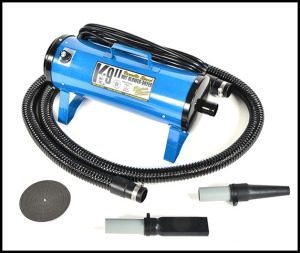 My favorite trick when working with this type of job is to bring my high velocity dryer right into the bathing area (bring your eye and ear protection, too!). With the dog fully lathered, blow the shampoo right off the pets while they are tethered in the tub. The slippery soap will allow the dirt, loose coat, and tangles slide out, being trapped in the shampoo and sticking to the back wall of the tub, minimizing the mess. Not all the shedding coat or mats will be removed but a lot will, making your job easier once you transfer to the drying table. Once you have blown out the pet, follow up with the rinsing process. Repeat this process as many times as necessary to get the dog “squeaky clean.”Once the pet is clean and thoroughly rinsed, apply a skin and coat conditioning treatment before heading to the drying table. Read your directions: some conditioning treatments need to be rinsed out while others do not. Your high velocity dryer and a heavy slicker brush will be your best friends during the drying process.
My favorite trick when working with this type of job is to bring my high velocity dryer right into the bathing area (bring your eye and ear protection, too!). With the dog fully lathered, blow the shampoo right off the pets while they are tethered in the tub. The slippery soap will allow the dirt, loose coat, and tangles slide out, being trapped in the shampoo and sticking to the back wall of the tub, minimizing the mess. Not all the shedding coat or mats will be removed but a lot will, making your job easier once you transfer to the drying table. Once you have blown out the pet, follow up with the rinsing process. Repeat this process as many times as necessary to get the dog “squeaky clean.”Once the pet is clean and thoroughly rinsed, apply a skin and coat conditioning treatment before heading to the drying table. Read your directions: some conditioning treatments need to be rinsed out while others do not. Your high velocity dryer and a heavy slicker brush will be your best friends during the drying process.
Rule # 2: Be Methodical and Thorough
First, blow out as much moisture and loose coat at possible with the air flow. Use the highest power setting the pet is comfortable with, and a condenser cone. Once you have pushed as much water and loose fur from the pet, remove the condenser cone, and bring the air flow close to the pet’s skin. “Boost” any loose coat out of the dog by lightly patting the area where the air is striking the skin with a slicker brush.
Continue to work over the dog in a methodical manner until your brush glides through the coat easily and no more loose coat is trapped in the brush.
Rule #3 – ENJOY!
When the dog is complete, it should smell clean and fresh. The coat should be glossy and float freely as the dog moves. There should be an irresistible desire to reach down and bury your hands in a freshly groomed pet.
What are your best methods? Jump over to the Learn2GroomDogs Facebook page and tell us about it!
Happy Trimming!
~ Melissa
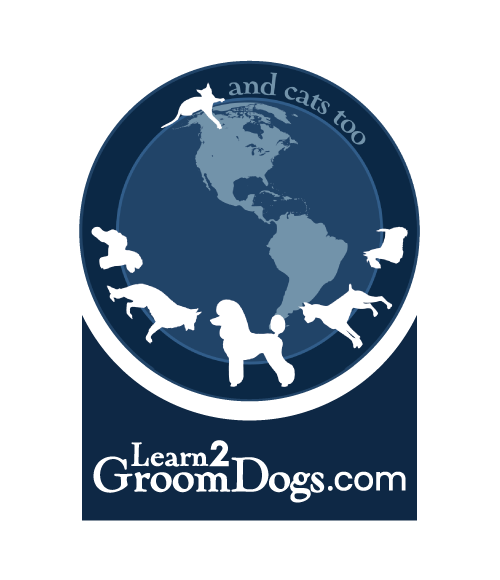
Sign up to get notified when we host FREE Facebook Live Events!
Thanks! We'll remind you to join our next Facebook Live event!

Sign up to get a reminder when your Members' Only Facebook Live Q&A is about to start!
Thanks! We'll remind you to join our next Facebook Live event!

Join us for our FREE Webinar and get tips, tricks, and the secrets to success from our team of top dog-grooming Experts. We'll send you a reminder email the day of the Webinar.
Thanks! We'll remind you to join our next Facebook Live event!

Join us for our FREE LIVECAST and get inspired by our team of dog-grooming Experts. Learn the tips and tricks other members have used to fuel their success through Learn2GroomDogs.com. We'll send you a reminder an hour before the LIVECAST begins.
Thanks! We'll remind you to join our next Facebook Live event!

From the atmosphere and lay out of your salon, marketing to attract and keep clients, to how many dogs you are going to do that day, Melissa and Joe will help you map out a plan for Success!
Thanks! You will be sent reminder emails and a special link to join the webinar!